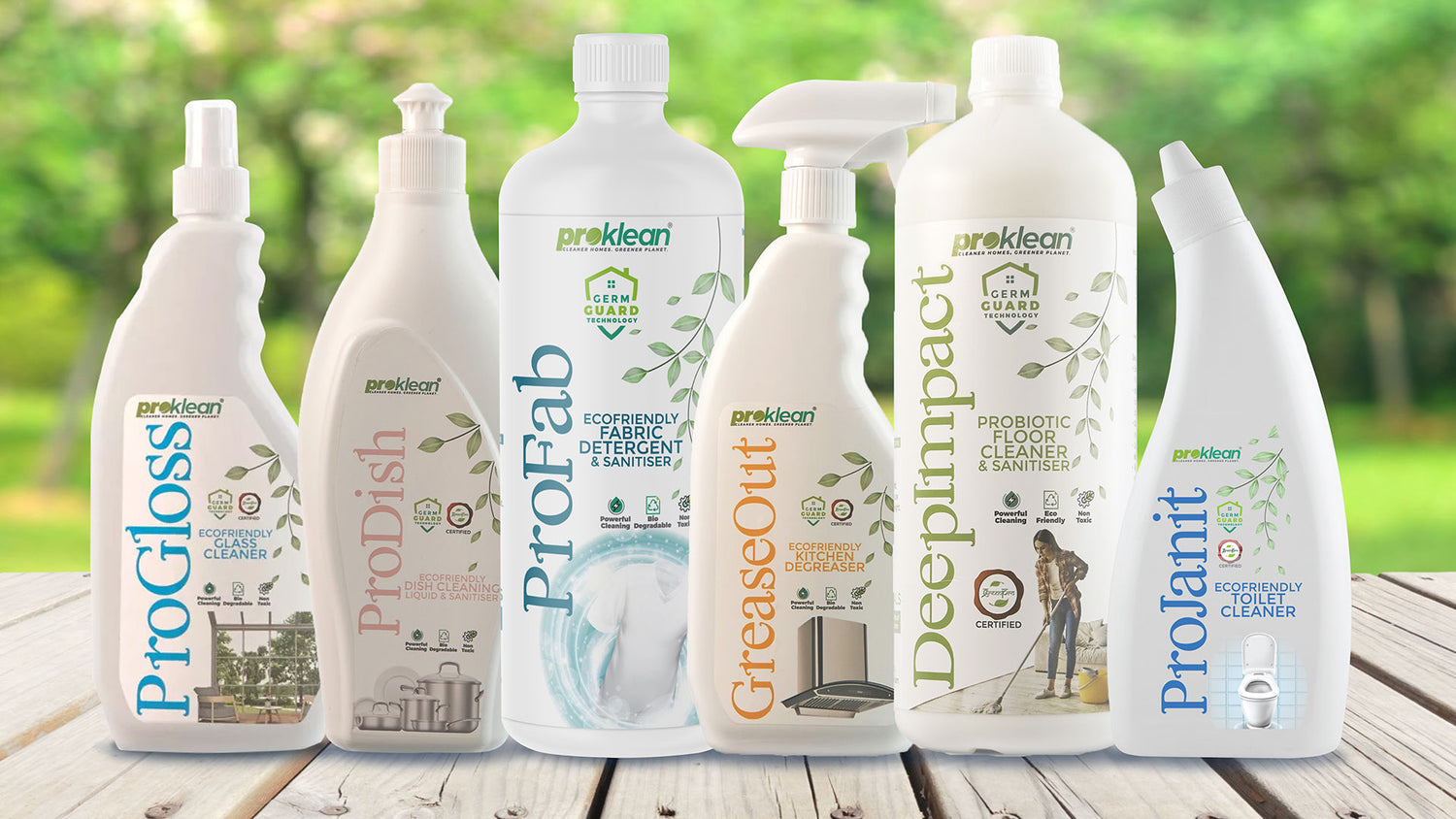One common myth that people believe is that foam helps clean- people believe that if they don't see soapy, foamy bubbles, their dishes or laundry isn't really being cleaned.
We've all fallen into that trap. It feels satisfying to see bundles of foam when we use a detergent or dishwasher. However, the truth is that suds don't equal cleaning power- it is just a psychological trick to make one feel that something is getting cleaned.
What are bubbles?
Bubbles are merely caused by soap molecules trapping air, in spherical pockets. Soap molecules are a bit like a magnet- while one end is attracted to water, the other repels it. As soap molecules surround the water molecules with this sticky side, it creates a spherical area of water.
Thus, a bubble is just made of soap and water- with no ability to attract dirt. When you learn this, it's easy to realise that this has nothing to do with cleaning clothes, dishes, or any other surface.

Surfactants: What Help Cleaning
A surfactant means "surface active agent", and is what actually helps clean.
Surfactants change the surface tension of water, so that water can more easily penetrate surfaces and clean dirt lodged in them. For example, it is the surfactants in detergents that help water to penetrate the fibres of clothes, helping loosen dirt. Surfactants work at an invisible level to help loosen dirt and other grime to clean clothes, floors, and dishes.
So Why Are Foaming Agents Added, Then?
Many regular detergents, dishwashing liquids, and even soaps and face washes create advertisements which show that their product creates a lot of foam, to prove that it is superior. This implies that the amount of foam is related to the cleaning powers of a product.
However, the truth is that foam has almost no effect on the cleaning ability. Foam and bubbles are just there to create a psychological effect of cleaning- as surfactants act at a level that isn't visible to the naked eye, most people feel there is no "cleaning action" taking place- hence, manufacturers add foaming agents.
The Negative Effects of Foam:
Although foam may make you feel that cleaning is taking place, foam can actually cause more harm than good.
- The more foam there is, the harder it is to rinse the item being cleaned. Thus, foaming products lead to increased use of water, which leads you to incur greater costs.
- When using foam in appliances like a dishwasher, the air pockets created by foam can actually make you lose pressure in the cleaning process. Here, foam is actually worse for cleaning.
- Using foaming detergents in washing machines has the risk of creating too much foam that can overflow from the washing machine lid.
- Foam is usually more expensive to add to cleaners and makes it less effective. Manufacturers often spend more money adding foam to a product than on the cleaner itself.
Thus, it is clear that foaming agents are more of a marketing tool than a cleaning tool. Foam can actually cause one to incur more expenses and lead to wastage of resources down the line. In contrast, using gentle, bio-based home cleaners like Proklean cleaners which do not produce foam not only helps you save water, but also ensures that no harmful chemical residue from the foaming agents are left behind on your various home objects.
How you can tell if a surface is clean:
Unlearning something is really hard. Having grown up with a variety of marketing tactics that have convinced us foam is necessary for cleaning, it can be hard to shift to a non-foaming cleaner. The biggest doubt people have about cleaners that don't foam is whether they are working to effectively remove dirt.
However, there are ways to tell if a product is clean or not- and it involves just simply observing the product, or surface.
Trust your eyes: many times, we can simply tell if something is clean or not by just looking at it.
If your clothes feel hard and crusty even after running through a washing machine, it may need more detergent.
If food residue is still stuck in a dish after scrubbing, the dish may need to soak in soapy water before scrubbing.
Thus, our instincts go a long way in helping identify whether an object is clean- they are much more reliable, safer, and natural.
REFERENCES
https://www.threemain.com/blogs/education/why-more-bubbles-don-t-mean-clean
https://cleanersolutions.net/what-you-need-to-know-about-foam/


